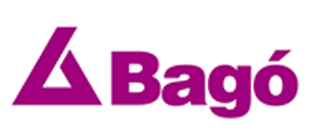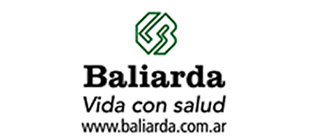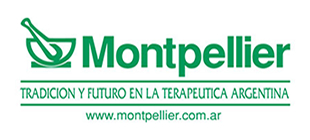
Aims and Scope La Prensa Medica Argentina covers the broadest range of scope of topics related to Medicine. The journal publishes original, high quality, peer-reviewed articles on all aspects of general internal medicine, primary care, family practice, clinical epidemiology, health service research, decision analysis, behavioral science, clinical ethics, psychosocial issues, and medical education, among others. Editor Guidelines Here are Basic Roles and Responsibilities of an Editor. Taking up the instructions given by the editor in chief for the Journal betterment. Handling the manuscripts for the evaluation and should provide the final decision on the manuscript as per the reviewer comments. Suggesting potential reviewers for the Journal to conduct the review process and also forwarding the manuscripts to potential reviewers. Handling author queries related to publication, ethical questions and misconduct raised while publication and should respond to them accordingly. Maintaining confidentiality of work received by every author as the review process is unbiased. Implementation of new ideas in reviewing policies discussed in editorial meetings. Spotlight on the quality review process to maintain the consistent level. Recommendation of conferences to promote the Journal in their website with mutual benefits. Keeping the records of reviewer perfomance and timelines. Identifying the trending topics on Journal scope and should suggest a special issue release. Monitoring the Journal performance by timely basis and capable of taking new decision for the improvement. Peer reviewers The corresponding or submitting author submits the paper to the journal, The journal checks the paper’s composition and arrangement against the journal’s Author Guidelines to make sure it includes the required sections and stylizations. The EIC checks that the paper is appropriate for the journal and is sufficiently original and interesting. If not, the paper may be rejected without being reviewed any further. Once the paper fits into the scope of journals, then it is considered for a peer review process. The handling editor sends invitations to individuals he or she believes would be appropriate reviewers. As responses are received, further invitations are issued, if necessary, until the required number of acceptances is obtained – commonly this is 2. The reviewer sets time aside to read the paper several times. The first read is used to form an initial impression of the work. If major problems are found at this stage, the reviewer may feel comfortable rejecting the paper without further work. Otherwise, they will read the paper several more times, taking notes so as to build a detailed point-by-point review. The review is then submitted to the journal, with a recommendation to accept or reject it – or else with a request for revision (usually flagged as either major or minor) before it is reconsidered. The handling editor considers all the returned reviews before making an overall decision. If the reviews differ widely, the editor may invite an additional reviewer so as to get an extra opinion before making a decision. As per the policies of LPMA, we require minimum of 2 valid review/ acceptance comments followed by the editor decision before initiating the production procedure/publishing it on the journal website. Peer-review policy La Prensa Medica Argentina operates a conventional single-blind reviewing policy in which the reviewer’s name is always concealed from the submitting author As part of the submission process, you will be asked to provide the names of peers who could be called upon to review your manuscript. Recommended reviewers should be experts in their fields and should be able to provide an objective assessment of the manuscript. Please be aware of any conflicts of interest when recommending reviewers. Examples of conflicts of interest include (but are not limited to) the conditions below: 1. The reviewer should have no prior knowledge of your submission 2.reviewer should not have recently collaborated with any of the authors 3. Reviewer nominees from the same institution as any of the authors are not permitted.Please note that the Editors are not obliged to invite any recommended/opposed reviewers to assess your manuscript |
||||||||
Instructions for authors. IMPORTANT: the presentation of articles can be done in English or Spanish. The journal La Prensa Médica Argentina® publishes scientific articles of clinical, surgery and medical specialties of bio-medical authors of general interest to professionals. Rigorous research that makes a significant contribution to the advancement of knowledge in these fields is promoted. The journal provides authors with expert arbitration, which guarantees the high quality of the published articles, the reflection of a solid scholarship in the respective fields and that the information they contain is accurate, reliable and novelty. Articles can be written in English or Spanish and must include a summary in Englishand in Spanish in both cases, in order to preserve the style of the journal. The original manuscript must include an email address of the author in charge of the publication which will be the only interlocutor with the publisher. WITH THE ONLY ACT OF SUBMISSION OF THE MANUSCRIPTS, ALL AUTHORS DECLARE TO BE IN ACCORDANCE WITH THE PRESENTATION IN ALL ITS PARTS, ACCEPT ALL THE CONDITIONS FOR PUBLISHING DESCRIBED HERE, NOT HAVING THE EDITORIAL ANY RESPONSIBILITY REGARDING THE CONTENTS OF THE MANUSCRIPT, THE OPINIONS OF THE AUTHORS, OR THE ORDER OF AUTHORS IN THE LIST OF AUTHORS. The necessary amendments must be sent before the closing of the respective number, there being no possible claims outside that term. IT IS ESENTIAL FOR THE ACCEPTANCE OF A MANUSCRIPT, TO RESPECTI ALL THE TERMES EXPRESED IN THIS INSTRUCTIONS FOR AUTHORS. |
||||||||
General considerations: The articles can be delivered printed in person during business hours or sent by mail to the publisher's address. But preferably they should be sent by email to our email addresses, in editable digital format, preferably MS Word “.doc” files in their different versions. In no case may the date of its possible publication be communicated in advance, which is subject to the final approval of the editorial committee. The journal fundamentally considers, beyond the possible merits of the article, the interest of its readers, the quality of the work and the importance or actuality of the subject. Authors are requested to refrain from requiring reports on articles that are in turn of publication. Not all manuscripts may be published, for reasons of space or because they do not adapt to the general guidelines of the journal or by decision of the advisory board or the director (regardless of possible merits). All articles that will be published should first be aproved by the advisory council and will be evaluated if it fits our aims and scope, general cosniderations and for plagiarism to the most extent possible. Acceptances and publication date will be communicated to principal author by email. Human and Animal Rights: All research must have been carried out within an appropriate ethical framework. If there is suspicion that work has not taken place within an appropriate ethical framework, Editors will follow may reject the manuscript, and/or contact the author(s)’ ethics committee. On rare occasions, if the Editor has serious concerns about the ethics of a study, the manuscript may be rejected on ethical grounds, even if approval from an ethics committee has been obtained. Articles conducting any animal or clinical studies should contain a statement in accordance with the animal and human ethics committee. Research should be carried out in a manner that animals do not get affected unnecessarily. Registration is required for all clinical trials. Informed Consent: In La Prensa Medica Argentina, the patients of every case have a right to privacy that should not be violated without informed consent. Identifying information, including names, initials, or hospital numbers, should not be published in written descriptions, photographs, or pedigrees unless the information is essential for scientific purposes and the patient (or parent or guardian) gives written informed consent for publication. Informed consent for this purpose requires that an identifiable patient be shown the manuscript to be published. Authors should disclose to these patients whether any potential identifiable material might be available via the Internet as well as in print after publication. Patient consent should be written and archived either with the journal, the authors, or both, as dictated by local regulations or laws. Nonessential identifying details should be omitted. Informed consent should be obtained if there is any doubt that anonymity can be maintained. For example, masking the eye region in photographs of patients is inadequate protection of anonymity. If identifying characteristics are altered to protect anonymity, such as in genetic pedigrees, authors should provide assurance, and editors should so note, that such alterations do not distort scientific meaning. When informed consent has been obtained, it should be indicated in the published article. |
||||||||
Regulation: Along with the manuscripts, a paragraph must be included during the application with the declaration from the authors of the status of this three items: -conflicts of interest -approval of the workplace ethics committee. - means of financing the investigation. ANY MANUSCRIPT THAT DO NOT INCLUDE THIS DECLARATIONS WILL NOT BE CONSIDERED FOR PUBLICATION, ALSO IF AT THE SOLELY DISCRETION OF THE ADVISORY COUNCIL DOES NOT MEET THIS ENTIRE REQUIREMENTS. -WORK ACCEPTANCE All the manuscripts received will be reviewed by a committee of experts in the exposed subject, which will give a verdict of acceptance, acceptance with corrections or not suitable for publication. The decision of the committee or the editors will be final. -GRAMATICAL ORTHOGRAPHICAL REVIEW For both manuscripts in Spanish and English, a proof of absence of spelling and grammar errors made with the proofreader of the program used must be attached to the submission and in case the authors are not native, a review by experts in English is strongly recommended. The manuscripts may be returned for correction if at the discretion of the reviewers present errors of these types. -EXTENSION OF THE MANSUCRIPTS: FULL PAPERS, RAPID PAPERS, CASE REPORTS and REVIEWS are accepted. FULL PAPER: up to 10 pages of text and up to 6 figures. They can be in colors if the work justifies it. RAPID PAPER: up to 5 pages of text and up to 2 figures. They can be in colors if the work justifies it. CASE REPORTS: they are accepted as long as the relevance of the case justifies it. Up to 5 pages of text and up to 2 figures. They can be in colors if the work justifies it. REVIEWS: experts will be requested by the publisher on topics of interest to our readers and eventually spontaneous presentations may be considered. There is no extension limit. -PRESENTATION: The electronic format should preferably be an MS Word ".doc" file and all tables or figures must be included in the same format indicated. The author must always keep a copy of the material sent. -TITLE AND HEADING: The title should be brief, clear and concise. The authors will appear with their full names, under each name and surname their most important positions or titles will be located. It is appropriate not to include an excessive number of co-authors, especially those who are not directly involved in the preparation of the manuscript. Thanks to them, as well as those made to individuals or institutions will go at the end of the text. -PARTES IN WHICH IT MUST BE DIVIDED: ABSTRACT, a brief summary of the work in the English language, containing a representative and clear description of all the sections, of approximately 200 words; KEYWORDS, up to a maximum of 5 for the purpose of being able to search the databases; INTRODUCTION, in which the reason and purpose of the work is expressed; MATERIAL AND METHODS, with which the work is carried out, where only the highly modified or original methods should be described extensively, while the others will be mentioned only and, if possible, with the bibliographic citation; RESULTS, the results obtained are described both in its explanation and in its mathematical and / or statistical sustenance when necessary, its statistical significance will be indicated and for reasons of space the extensive statistical tables will be avoided; DISCUSSION and / or CONCLUSIONS, which will include the conclusions obtained; REFERENCES, as recorded in the text. Next and in an appropriate way: conflicts of interest, approval of the workplace ethics committee and means of financing the work performed. -FIGURES: They will carry a single correlative numbering from 1 onwards; They must be sent separately. In case of digital format they accompany the main document but in a separate document. No radiographic plates or slides are allowed. It is ideal that the figures are original and clear photographs, of conventional size and of high quality (the magazine reduces them to the appropriate size). -LEYENDS (feet of figures or epigraphs): They should be grouped on a separate sheet, tables or statistical tables that are not figures will be numbered separately, also from 1 onwards. -BIBLIOGRAPHIC REFERENCES: Up to a maximum of 30 citations that will be written strictly according to the ISO 690 standard that can be consulted at the following link: https://es.wikipedia.org/wiki/ISO_690 Examples: Analysis of mutations in the glucokinase gene in people clinically characterized as MODY2 without a family history of diabetes. Ariel Pablo Lopez, Alejandro de Dios, Ignacio Chiesa, Maria Silvia Perez, Gustavo Daniel Frechtel. Diabetes Research and Clinical Practice 118 (2016) 38–43. Presentaciones poco frecuentes de diabetes tipo MODY: el ejemplo de MODY tipo 5 y las formas de novo de MODY tipo 2. Alejandro de Dios, Sofía Irene Trobo, María Silvia Pérez, Ignacio Chiesa, Gustavo Daniel Frechtel, Ariel Pablo López. Revista de la Sociedad Argentina de Diabetes. Año 51, volumen 51, Nº 2, junio de 2017. ISSN 0325-5247 (impresa) ISSN 2346-9420 (en línea). -TERMINOLOGY: Avoid twists and strange metaphors to a scientific article; It will always be written in the third person. -ABBREVIATIONS AND SYMBOLS: All units of measure, weight and time must be expressed according to the system centimeter, gram, second. The temperature will be indicated in degrees Celsius. In case abbreviations are used, it is essential that they appear accompanying the first extensive mention of the text, even those that the author considers to be in common use. -NECROLOGICAL NOTES: They are requested especially by the Directorate and spontaneous shipments are not accepted. -NEWS, ANNOUNCEMENTS, SPEECHES, REMEDIES, CHRONICLES, INFORMATION: They do not configure the usual material of the Magazine. Their inclusion will be exceptional and for no reason will they include political issues, partisans, etc. -LETTERS TO THE EDITOR: The clarifications related to articles appeared in the Journal only, or because their extension or structuring do not determine their publication as an original article, will appear with that title. -REPRINT: To obtain reprints of the articles published in the Magazine see on our website in the respective section. Data Sharing La Prensa Medica Argentina encourages authors to share the data and other artefacts supporting the results in the paper by archiving it in an appropriate public repository. Authors may provide a data availability statement, including a link to the repository they have used, in order that this statement can be published in their paper. Shared data should be cited. All accepted manuscripts may elect to publish a data availability statement to confirm the presence or absence of shared data. If you have shared data, this statement will describe how the data can be accessed, and include a persistent identifier (e.g., a DOI for the data, or an accession number) from the repository where you shared the data. You may use the Standard Templates for Author Use or draft your own. |
||||||||
 |
 |
 |
 |
 |
